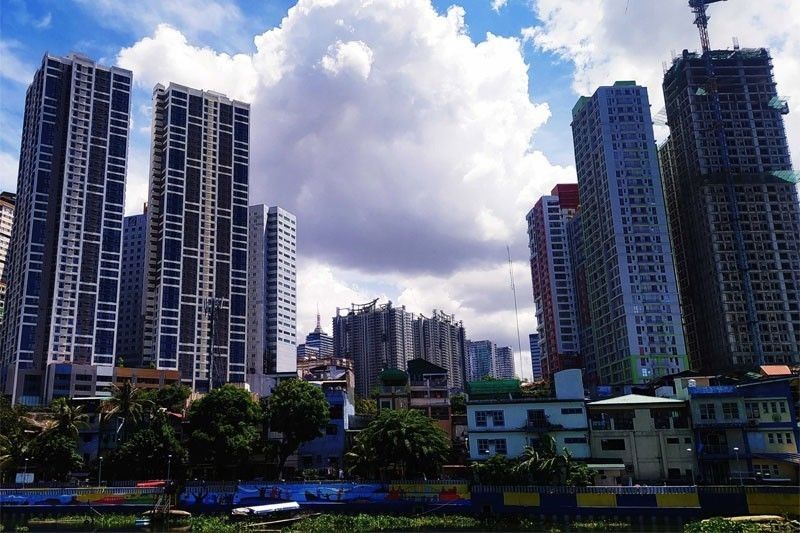Philippines contraction seen deepest in SouthEast Asia

MANILA, Philippines — Multilateral lender International Monetary Fund (IMF) said the Philippines is expected to suffer the biggest blow from the coronavirus disease 2019 or COVID-19 pandemic in the region with a deeper economic recession this year despite the projected less severe global contraction.
Yongzheng Yang, IMF resident representative to the Philippines, said the country’s gross domestic product (GDP) is now expected to contract by 8.3 percent based on the October 2020 World Economic Outlook instead of 3.6 percent in the WEO released last June.
This is deeper than the contraction in other members of the Association of Southeast Asia Nation (ASEAN) such as Thailand’s 7.1 percent, Malaysia’s and Singapore’s six percent, and Indonesia’s 1.5 percent. Vietnam is seen booking a GDP growth of 1.6 percent, while Taiwan’s GDP is expected at zero.
“The downward revision of 2020 growth forecasts for the Philippines mostly reflects a larger-than-expected downturn in Q2 and a more gradual resolution of the pandemic as witnessed over the past months, with prolonged social distancing,” Yang said via email.
The Philippine slipped into recession with a record GDP contraction of 16.5 percent in the second quarter from 0.7 percent in the first quarter as the economy stalled when the entire Luzon was placed under enhanced community quarantine in the middle of March to contain the spread of the deadly coronavirus.
The GDP contracted by nine percent in the first semester prompting economic managers through the Development Budget Coordination Committee (DBCC) to set a deeper GDP contraction of 4.4 to 6.6 percent instead of two to 3.4 percent this year.
The economy partially reopened as the National Capital Region (NCR) shifted to general community quarantine starting June, but Metro Manila and nearby provinces shifted to modified enhanced community quarantine from Aug. 4 to 18 as COVID-19 cases soared an doubled to 200,000 from 100,000.
Despite the longest and strictest lockdowns in the world, COVID-19 cases in the country has breached 340,000 with over 6,000 deaths.
Based on its latest WEO, the IMF now looking at a less severe global contraction of 4.4 percent instead of 5.2 percent last June as the world economy is climbing out from the depths to which it had plummeted during the “Great Lockdown” in April.
The 0.8 percentage point improvement could be attributed to the upward impetus from better-than-anticipated second quarter GDP outturns mostly in advanced economies versus the downdraft from persistent social distancing and stalled reopenings in the second half of the year.
“Despite a somewhat softer global contraction expected in the October WEO, weak public confidence and low remittances in the Philippines as a result of the pandemic are expected to continue weighing on private investment and consumption,” Yang said.
Yang added the negative impact of the COVID?19 pandemic would only be partially offset by policy support.
President Duterte has signed Republic Act 11494 or the Bayanihan to Recover as One Act (Bayanihan II), unleashing a stimulus package of P165.5 billion to help jumpstart the economy.
“On fiscal policy, the severity of the COVID?19 socioeconomic impact calls for bold fiscal action to minimize the scarring effects, and recovery phase policy measures in 2021 will need to be forceful and well calibrated. We support Bayanihan I and II, which have provided important stimulus and support in response to the pandemic. Owing to prudent debt management over the recent years, the Philippines has room to provide further fiscal support, if needed,” he said.
According to the multilateral lender, it is important to maintain accommodative macroeconomic policies during the recovery phase and continue pursuing structural reforms to create more jobs in the short run, enable a more conducive business environment, and provide a stronger social safety net for the poor and vulnerable.
“Once a sustainable recovery is underway, fiscal policy priorities should shift from income support to aggregate demand support, including a renewed infrastructure push in emerging growth areas such as digitalization, health care, and climate change,” Yang said.
He added social protection programs should be strengthened as current temporary income support measures are phased out.
For 2021, Yang said IMF is now expecting a stronger growth of 7.4 instead of 6.8 percent on account of an expected rebound in pent-up demand from the relaxation of quarantine measures and continued effects of the policy easing this year, in addition to the 2020 base effect.
“Nonetheless, significant scarring effects like hysteresis, bankruptcies are expected and it will take a couple of years before real GDP to return to the pre-pandemic level,” Yang said.
Yang said the COVID?19 crisis is expected to result in lower levels of potential output and higher structural unemployment over the medium term, but real GDP growth is expected to converge back to potential of 6.5 percent by 2025.
- Latest
- Trending
























